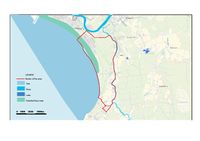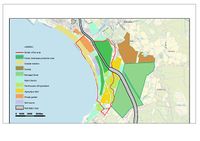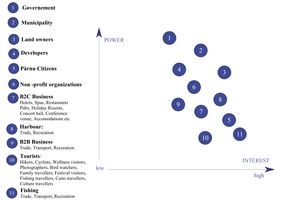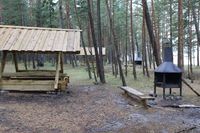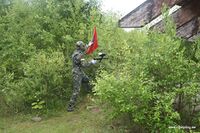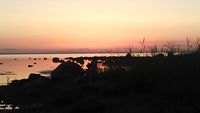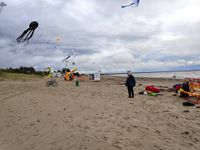COLAND Case Study 2020 - Reiu: Difference between revisions
| Line 166: | Line 166: | ||
== A.2 Summary of your landscape system analysis and your development targets == | == A.2 Summary of your landscape system analysis and your development targets == | ||
''' | '''Human activities:''' | ||
* Industry | * Industry | ||
| Line 177: | Line 177: | ||
* Traffic-Transport | * Traffic-Transport | ||
''' | '''Nature processes:''' | ||
* Strong wind | * Strong wind | ||
| Line 187: | Line 187: | ||
* Flooding | * Flooding | ||
''' | '''Pressure:''' | ||
* CO2 | * CO2 | ||
| Line 195: | Line 195: | ||
* Littering. | * Littering. | ||
''' | '''State:''' | ||
* ATM the study site is more protected and in natural state | * ATM the study site is more protected and in natural state | ||
| Line 203: | Line 203: | ||
* Occasional urban sprawl along the seafront. | * Occasional urban sprawl along the seafront. | ||
''' | '''Impacts:''' | ||
* If the development continues and the sea level rises more often or permanently, high wind, | * If the development continues and the sea level rises more often or permanently, high wind, | ||
Revision as of 11:36, 20 February 2020
>>>back to working groups overview
| Area | Reiu-Raeküla | |
| Place | Pärnu county | |
| Country | Estonia | |
| Topics | please enter the main coast-related topics here | |
| Author(s) | Suvi Pohjola-Stenroos, Renata Villalobos Anaya, Karin Rea, Mirjam Manglus, Airi Loid, Massooma Abbas | |
Rationale
- Why do you think this case is relevant? What is your hypothesis considering the landscape challenges?
- Format: 3-4 sentences
Location and scope
You can edit this map with the map editor
A Landscape System Analysis
A.1 Landscape layers and their system context
Geomorphology, landscape units and coastal typology
- Description of evolution, status quo and driving forces, is the coastal typology changing? Why is that? (approx 200 signs)
- add 1-2 graphical representations to the image gallery, you can add more if you like
- Yourcase landscapeunits1.jpg
add a caption
- Yourcase landscapeunits2.jpg
add a caption
Land use
- settlements, infrastructure, agriculture, resource extraction, natural areas, energy production...
- description of evolution, status quo and driving forces, is the land use likely to change? Why is that? (approx 200 signs)
- add 1-2 graphical representations to the image gallery, you can add more if you like
- Yourcase landuse1.jpg
add a caption
- Yourcase landscapeunits2.jpg
add a caption
- Yourcase landscapeunit3.jpg
add a caption
Green/blue infrastructure
1/3 of the area consists of a landscape reserve and forest growing on it. There are health trails that can be used all year round. Under protection are the bird species: Pernis apivorus, Bonasa bonasia, Strix uralensis, Caprimulgus europaeus and the plant species: Listeria ovata, Epipactis helleborine, Dactylorhiza incarnata, Huperzia selago. In the coastal meadows the reed has grown and the characteristic vegetation is disappearing. To restore it, an urban cow project has been launched: in summer, cows live on coastal meadows and eat less reed, and the former vegetation is restored.
Elements of blue infrastructure:
1) Pärnu bay
2) Reiu river, border of study area
3) Pärnu river
Forces of changing (Peoples treatment):
1) Real estate developments in coastal areas and near highways - which can lead to the disappearance of forests, as well as the conversion of protected forests to wind.
2) Increase in the number of holiday tourists on the beach – which may have negative impact on the cleanliness of the water and the shoreline
3) Increasing ATV and bicycle users; and uncontrolled use of forest paths – may endanger the conservation of protected species
4) The construction of the Rail Baltic railway - may adversely affect the landscape protection area in the central part of the study area. Completed railroads can also degrade residents' access to health trails in the forest
Coastal conditions can also change due to natural forces:
1) The high shoreline damages the high shore near Reiu village
2) Climate change may cause coastal meadows and buildings closer to the sea to be submerged
Actors and stakeholders
Areal problem – possibilities
- Pärnu county population 86.163
- Pärnu city 43.000, Häädemeeste 4.800 > during the summer months > 100.000
- Ethnic groups: Estonians (79.3), Russian (15.3%), Ukrainians (2.12%), Finns (0.73%), Belarusians(0.65%) > heterogenicity
- Economically balanced region with many comprehensive industries
- Competitive business on worldscale markets in some sectors
- Active non- profit organizations especially in nature resources, (14 association /1000 inhabitants)
Local market
- Tourism
- Harbour (guest harbour: for 140 boat spaces with all facilities)
- Fishing
- Trading
- Wellness and holiday resort business
- Accomodation (b&b)
- Events: music festivals, sport events
- Historical scene: museums, historical sites, traditional
- Nature: bird watching, photographers
- Construction, developers, real estate
Problems
- Coastline nature sensitive for extensive tourism
- Water quality problems (nutrients, shallow bay, temperature, wind> favour cyanobacteria = toxic blue algae)
- Connections challenging; limited possibilities to walk from pärnu city to Lottemaa direction along the seafront
- Occasional flooding
- Occasional ridged ice formation causes damages on sea front
- Cyanobacteria on Pärnu beach
Potential
- Nature tourism in balanced way
- Coastline activities: bird watching, plant watching, butterfly watching,
- Serene walking paths in pine forests
- Star watching cabins on the beach
- Pärnu city sea pool with boardwalk
- Connected trail between sea pool, selected coastal meadows, to serene
- Piers for landscape and sea watching along the route
Sacred spaces and heritage
- Which places/elements hold cultural value and to whom?
- You may add a map and some images, please also explain in your caption why these elements are valuable
- Your case sacredspace1.jpg
add a caption
- Your case sacredspace2.jpg
add a caption
- Your case sacredspace3.jpg
add a caption
Visual appearance and landscape narrative
There is not any known visual or written creation about the areas. There can be some paintings that local small artist have done but their works are not usually public so they can’t be found and this statement can’t be totally confirmed.
If we take a modern turn then we can see that people have captured a moment/ activities the way that the nature is always big part of that. Different kind of activities and opportunities for different tastes. People are capturing elements that they like and feel good about.
A.2 Summary of your landscape system analysis and your development targets
Human activities:
- Industry
- Service sector
- Logging
- Heating houses with wood
- Tourism &
- Hospitality Services
- Large outdoor events,
- Traffic-Transport
Nature processes:
- Strong wind
- Waves
- Erosion
- Sedimentation,
- High temperature changes
- Lack of ice on sea on winter
- Flooding
Pressure:
- CO2
- Soil & Water pollution
- Tree damages
- Noise &Light pollution
- Littering.
State:
- ATM the study site is more protected and in natural state
- Used for recreation, bird watching, picnicking, family holidays, nature watching, producing
wellbeing and joy, but does not have connection to city network along the seafront
- Tree roots on certain spots have remarkable erosion lesions
- Occasional urban sprawl along the seafront.
Impacts:
- If the development continues and the sea level rises more often or permanently, high wind,
waves and flooding will cause damage to ecosystems and as well as to residential areas.
- Coastal meadows will be under water, ditches do not drain, household water supplies
(surface water source) may contaminate from flooding surface waters
- Pollution will cause health problems, invasive species appear and start taking over the native
- Number of pollinator will decrease, soil will compact and trees have damages.
- Without proper zoning on coastal areas, disturbances will take over the entire Pärnu Bay.
Zoning requirements include separating the following areas: trade, fisheries and protected areas.
- Water pollution will decrease to value of Pärnu as a wellness resort and increase health hazards.
- You can summarize your findings with an DPSI(R) Model or a Spider Diagram
- Link back to the Sustainable Development Goals: Which goals are at risk?
- What is your hypothesis for this landscape?
- Visualise your hypothesis with one graphic/pict
- Are there any existing initiatives taking action in this landscape? Do you have a critical perspective on that?
- Add text and visuals
- Your case your hypothesis visual.jpg
explain your hypthesis briefly in the caption
A.3 Theory reflection
- Reflect on at least three international policy documents in relation to their local landscape case
- choose one international, one European and one national document
- You can choose references from our reading list
- Scope: 250 words
A.4 References
- give a full list of the references you have used for this section
Phase B: Landscape Evaluation and Assessment
B.1 Assessment Strategy
- Based on the hypothesis derived from your previous landscape systems analysis you are now asked to define the goals for assessing the landscape. Your assessment is the basis for evaluating the landscape status.
- Which elements and phenomena need to be mapped, why and how?
- This a text contribution, max 250 words
B.2 Mapping
- As defined by your assessment strategy you conduct the mapping and present your findings here
- As a minimum, at least three different themes need to be mapped, you may choose more if needed
- Your case your assessment mapping themel.jpg
briefly explain the findings of your mapping
- Your case your assessment mapping theme2.jpg
briefly explain the findings of your mapping
- Your case your assessment mapping theme3.jpg
briefly explain the findings of your mapping
B.3 Problem definition and priority setting
- Give a summary of the major findings of your mapping process, what are the problems/potentials identified?
- Draw a problems/potentials map
- Set priorities for the most relevant issues
- Your case problems potentials map.jpg
add caption here
B.4 Theory reflection
- Please reflect the assessment and evaluation methods used based on at least three readings
- Did you encounter limitations'
- 200 words test contribution
B.5 References
- give a full list of the references you have used for this section
Phase C – Strategy and Master Plan
C.1 Goal Setting
- Define strategic planning objectives based on the evaluation findings
- Link back to your original targets from section one and the Development Goals
- 150 words text contribution
C.2 Spatial Strategy and Transect
- translate your strategic goals into a vision
- develop a spatial translation of your vision
- exemplify your vision in the form of a transect with concrete interventions
- add map(s) and visualizations
- Your case spatial translaton vision.jpg
add caption here
- Your case transect.jpg
add caption here
- Your case transect detail1.jpg
add caption here
- Your case transect detail2.jpg
add caption here
C.3 From Theory of Change to Implementation
- For implementing your vision: Which partnerships are needed? Which governance model is required?
- Who needs to act and how? Draw and explain a change/process model/timeline
- Which resources are needed? On which assets can you build?
- add 150 words text and visuals
- Your case spatial your governance model.jpg
add caption here
- Your case spatial your process model.jpg
add caption here
C.4 References
- give a full list of the references you have used for this section
D. Process Reflection
- Reflect in your intercultural and interdisciplinary team on the outcomes of your study
- Which limitations were you facing?
- What have you learnt from each other?
- What would you do differently next time?
- You can also use diagrams/visuals
- 250 words text

